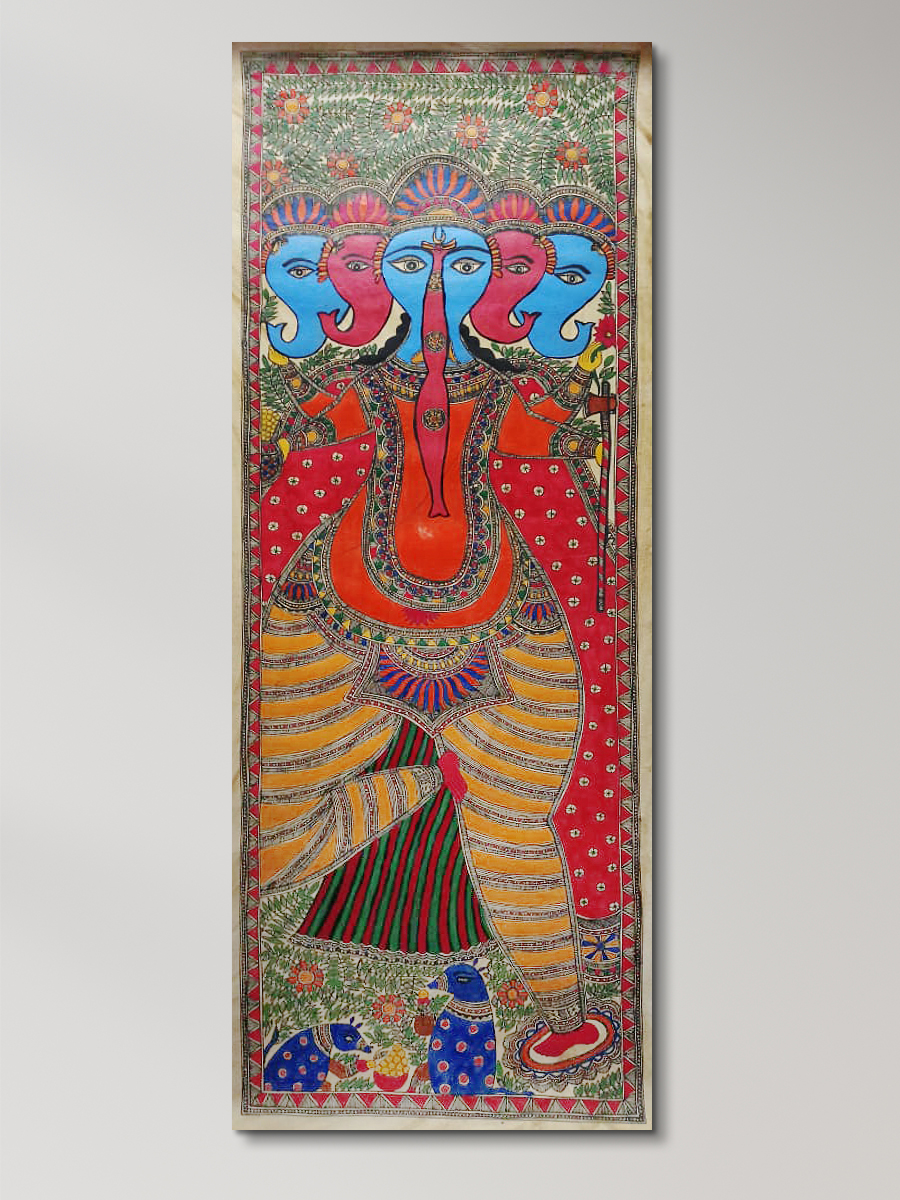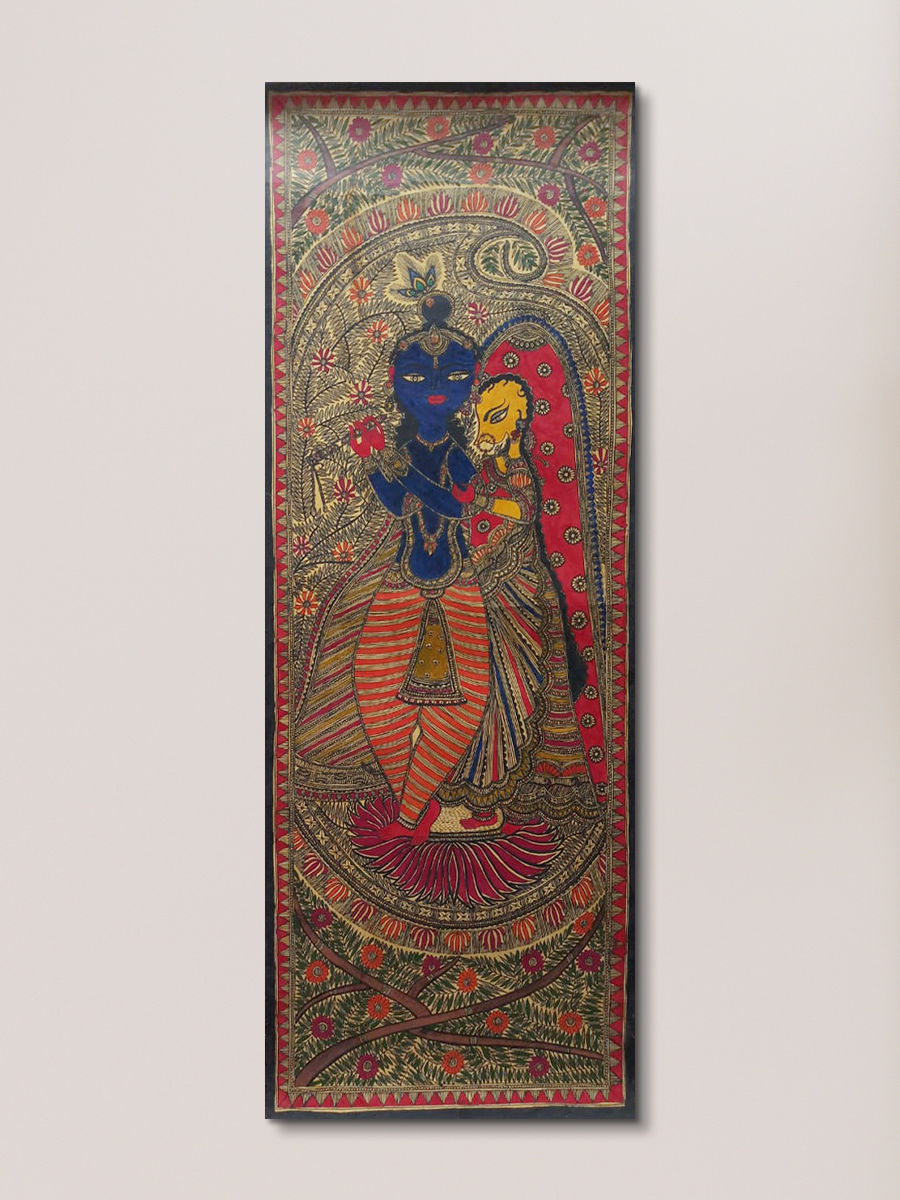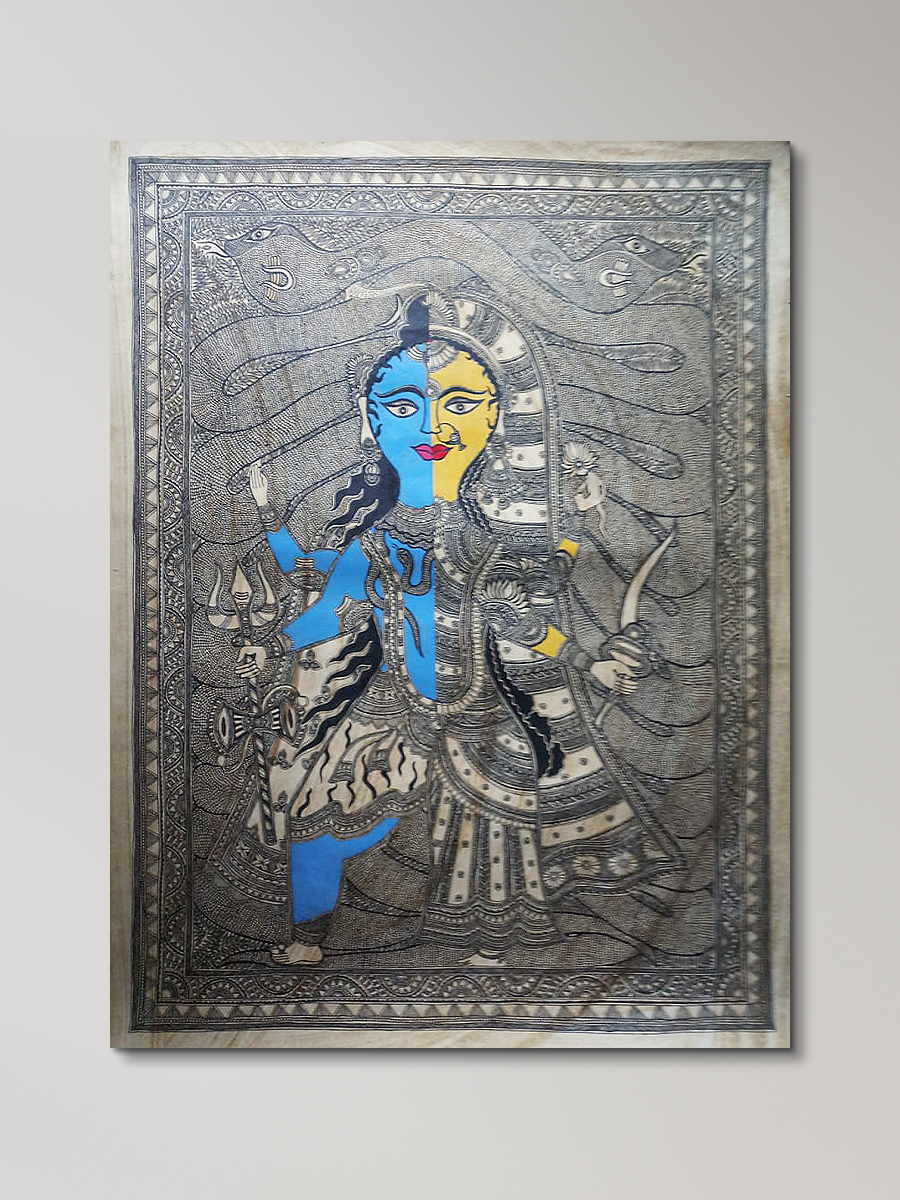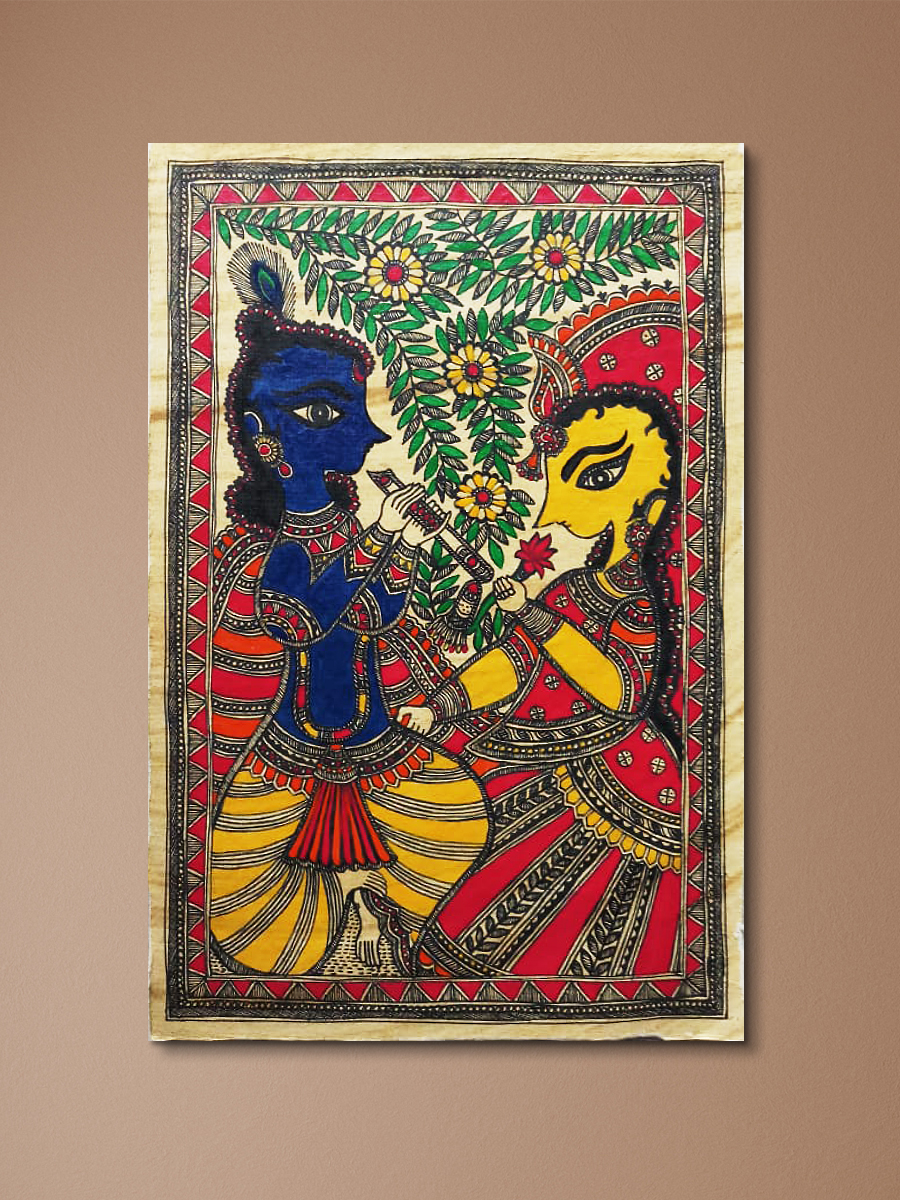The History of Madhubani art Paintings: A Rich Tapestry of Artistic Heritage
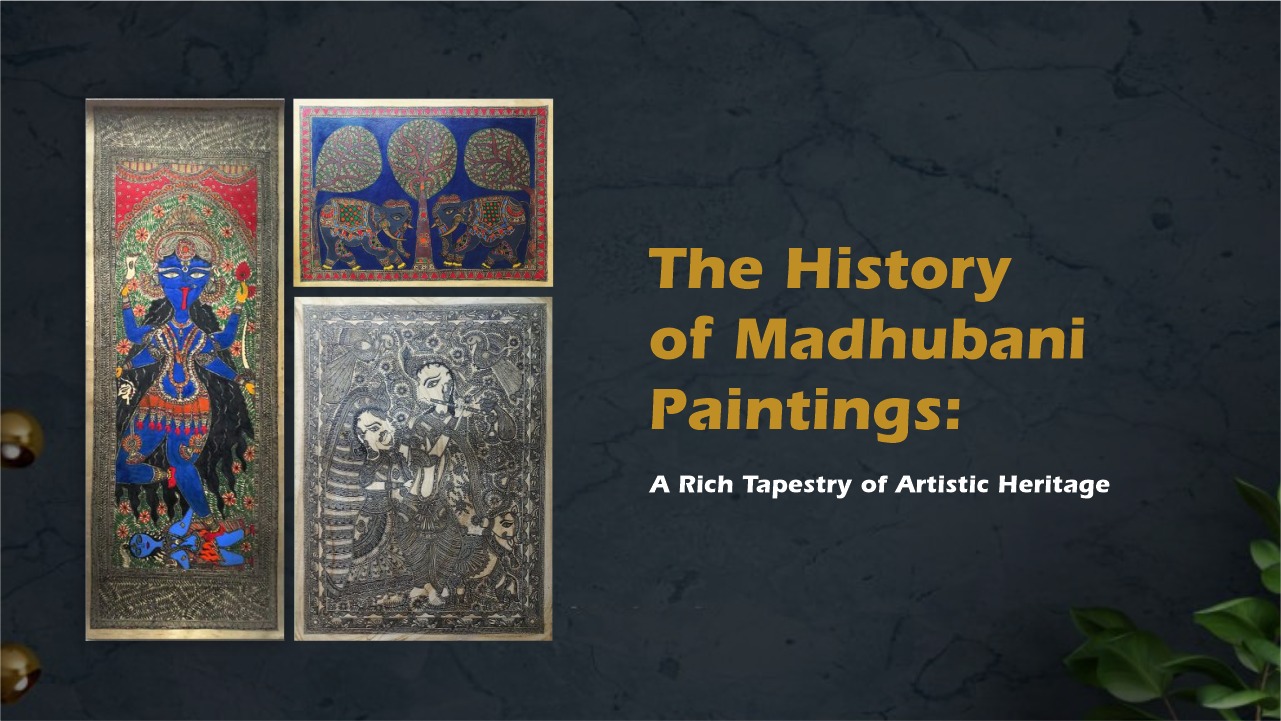
Step into a kaleidoscope of colours, where brushstrokes dance to the rhythm of tradition and imagination. Welcome to the mesmerising world of Madhubani art paintings, where vibrant hues collide with intricate detailing to create a visual symphony that leaves your senses spellbound. Like ancient whispers on the canvas, these artworks carry the tales of Mithila, Bihar, blending mythology, nature, and daily life into a tapestry of wonder.
The Origins
Originating from the Mithila region of Bihar, India, specifically in the villages of Jitwarpur and Ranti near Madhubani city, this traditional art form holds immense cultural and historical significance. The artistic traditions of Mithila, along with their daily lives, festivals, and rituals are deeply intertwined with this art form. While the exact origins of Madhubani paintings remain unclear, it is believed that they were commissioned by King Janak, the ruler of the Mithila Kingdom, to commemorate his daughter Sita's wedding to Prince Rama, as depicted in the Hindu epic, Ramayana. These paintings first served as a visual representation of that auspicious event. It is also believed that even the inhabitants of Mithila adorned their homes with intricate wall paintings during the holy matrimony, thus laying the foundation for Madhubani art.
Pioneers and Influencers
Madhubani art owes its development and recognition to the talented artists and communities that have preserved and nurtured it over the years, almost exclusively by the women! From a young age, girls playfully engage with brushes and colours, gradually honing their artistic abilities. Before commencing the painting process, women typically begin with a prayer to the deities, seeking their blessings for successful outcomes and rituals. The greatest honour that the artists receive is when they adorn the kohbar, the newlywed couple's room, with their exquisite paintings.
The Bharni, Katchni, Tantrik, and Godna styles are some of the notable variations within Madhubani art, each associated with specific communities. Several artists have played a pivotal role in popularising Madhubani or Mithila paintings on a global scale. Ganga Devi, Sita Devi, Baua Devi, and Bharti Dayal are among the renowned artists who have made significant contributions to the art form, elevating it to new heights.
Traditional handpainted Madhubani painting of Ganesha_Ochre and Blue
The Heart of the Art
Original Madhubani paintings primarily revolve around religious themes, with a central focus on love and fertility. These art pieces find their place in various rooms of the house, including prayer rooms, ritual areas, bridal chambers, and village walls to welcome guests. Nature and mythology serve as inspiration, but each region and artist add their unique adaptations and versions. Commonly depicted themes include theHindu deities Radha and Krishna, Sita and Rama, Shiva, Lakshmi, Saraswati and Ganesha as well as symbols like monkeys, the sun, the moon, the Tulsi plant, the traditional lamp symbolising a happy life, wedding scenes, and other social events.
Historically, Madhubani art designs were practised by women as a form of self-expression and a way to decorate their homes. But men are now increasingly participating in it to meet market demands. Additionally, the traditional process of creating Madhubani art paintings has evolved, with paintings transitioning from handcrafted renderings on plastered mud walls to encompassing paper and fabrics, catering to the expanding commercial interest. For instance, we find a breathtakingly beautiful Panchamukhi (5-headed) Ganesha painted in ochre and yellow on handmade paper at Planet Handcrafted which has a dedicated section for this ancient art.
Traditional handpainted Madhubani painting of Radha and Krishna
Understanding Madhubani Art
Madhubani art is characterised by its distinctive style, which features bold lines, geometric patterns, and vibrant colours. It is primarily created using natural pigments derived from plants, vegetables, and minerals. Traditionally, the artists used brushes made from twigs wrapped in cotton, ensuring a unique texture and authenticity to the paintings. The use of natural pigments not only adds a rustic charm but also makes Madhubani art paintings eco-friendly. Artists employ a wide range of colours, including bright red (obtained from the Kusum flower), yellow (from turmeric), green (from applewood tree leaves), blue (from indigo), white (from rice powder), orange (from Palash flower) and black (from a mixture of blight and cow dung). Twigs serve as brushes, allowing for precise and intricate detailing.
Unique Aspects and Distinctive Motifs
Original Madhubani paintings reflect a diverse range of themes and subject matters from depicting scenes from Hindu mythology to capturing everyday village life. Madhubani art is known for its rich symbolism and unique motifs. Common motifs include fish, birds, turtles, peacocks, lotus, snakes, and Hindu deities. Each motif holds its own significance, often conveying themes of fertility, prosperity, love, and spirituality.
Madhubani paintings are known for their striking colours and vibrant hues which not only add visual appeal but also convey the energy and vibrancy of the Mithila region. It is characterised by intricate detailing, which requires precision and skill. The artists meticulously create intricate patterns and fill them with minute details, such as floral designs and traditional motifs.
A Special Contribution
Madhubani paintings serve as a repository of cultural narratives, folklore, and ancestral heritage. They capture the traditions, beliefs, and values passed down through generations, acting as visual storytellers of the Mithila culture.
In 2012, the Madhubani painting tradition emerged as a vital force in India's conservation efforts, specifically in the state of Bihar. The region faced rampant deforestation due to road expansion and ‘developmental’ activities. To protect the local trees, they were decorated with Madhubani paintings with depictions of gods and mythological scenes of Radha-Krishna, Rama-Sita, Ganesha, Ramayana, Mahabharata, and other divine imagery. Thus, the trees were preserved by leveraging the cultural importance attributed to Madhubani paintings, highlighting the intersection between art, conservation, and spirituality.
The Way Ahead
Despite its popularity, Madhubani art faces challenges in sustaining its traditional techniques and styles. Ensuring the continuity of knowledge and skills among future generations, addressing economic disparities, and protecting the authenticity of the art form are essential factors in preserving this cultural treasure. There is also the threat from imitations done by non-indigenous artists and digital prints of authentic Madhubani paintings that threaten the livelihoods of its traditional practitioners.
While Madhubani art retains its traditional techniques and styles, it has also evolved and adapted to modern sensibilities. Artists now explore new themes, experiment with different materials, and collaborate with contemporary art practices, ensuring the art form's relevance in the present age. That apart, the art form has also received the Geographical Indication (GI) status. Essentially, a GI signifies that the product is unique to its specific region and carries certain characteristics associated with that location, offering consumers assurance of its authenticity and quality.
Traditional handpainted Madhubani painting of Radha with Krishna playing the flute
Become a Part of the Legacy
In a world filled with mass-produced replicas, Madhubani art stands as a testament to the beauty of handcrafted marvels by generational artisans that breathe life into every stroke. As we marvel at the mesmerising tales woven into each painting, let us not forget our role as guardians of this cherished heritage. By appreciating and supporting Madhubani art, we become stewards of a legacy that spans generations, ensuring its preservation for years to come. Together, we can paint a future where the magnificence of Madhubani remains etched in the tapestry of human expression.


 USD
USD  GBP
GBP EUR
EUR AED
AED



